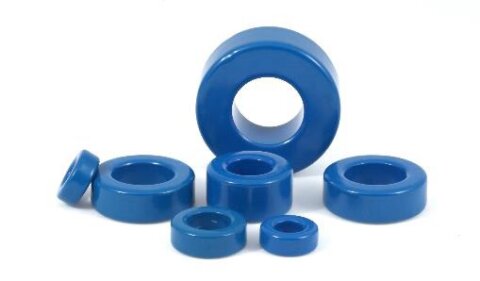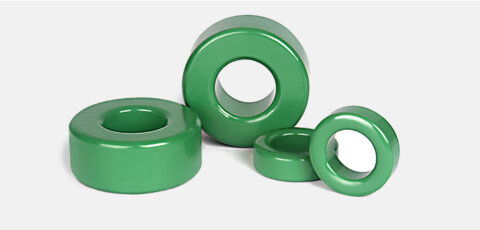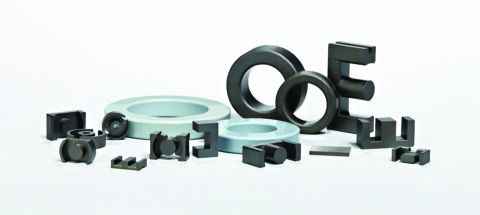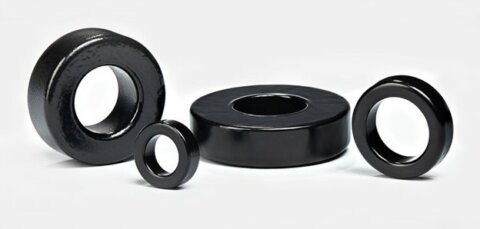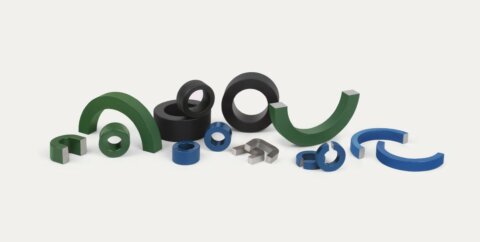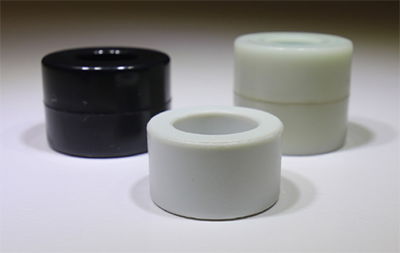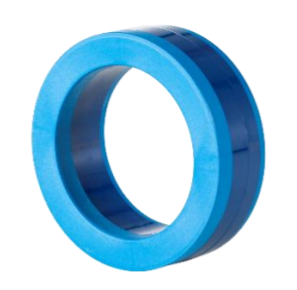Crystalline Tape Wound Cores
- Technology
- Nickel iron tape wound cores
- Partner
- Magnetics Inc.
High permeability alloys of non-oriented nickel-iron or grain-oriented silicon-iron, used in technical applications, mainly at low frequency, but also up to 40kHz for thinnest tapes.
Each of these materials has unique properties making them perfect in applications such as reactors, static magnetic devices, current transformers, magnetometers, flux gates, MagAmps.
Magnetics Inc has the expertise and experience and is one of few organisations developing and producing these materials. Tapes are produced in gauges from 0.013mm to 0.104mm. Cores are wound and high temperature annealed to adjust magnetic properties. The cores are available with outside diameters ranging from 11.13mm to 76.2mm and come either uncased, in non-metallic or aluminium cases, or Epoxy coated.
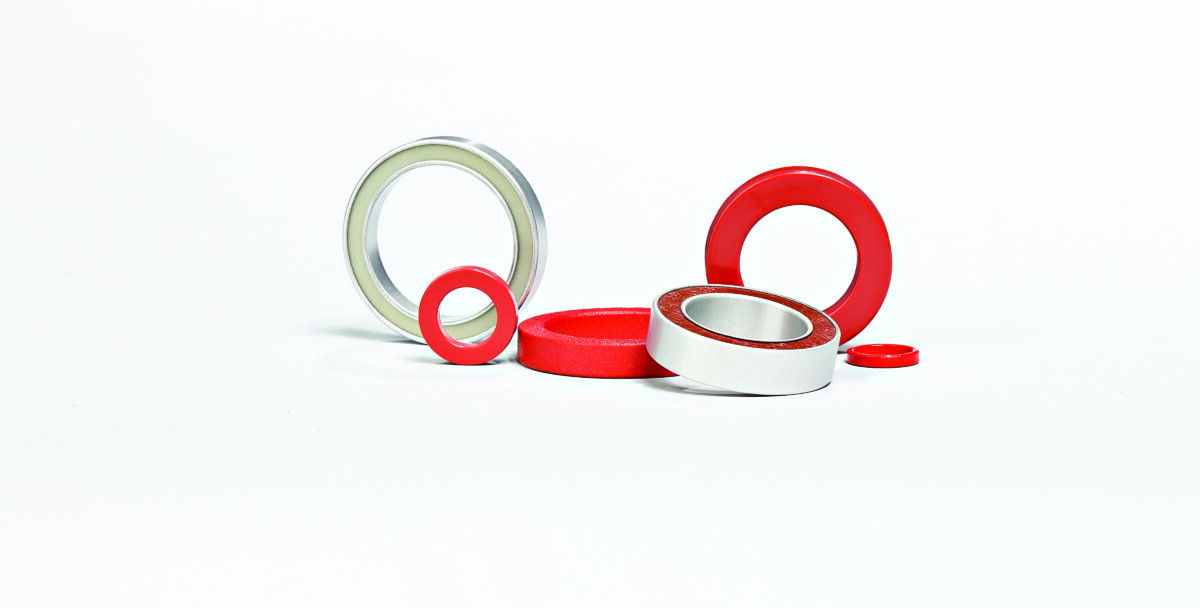
Range features
A high level overview of what this range offers
- Choice of materials with different composition and hence different remanence, permeability, saturation induction
- Tape thickness 0.013 – 0.104mm (Magnesil 0.052 – 0.104mm)
- Standard core size from 11.1 x 9.5 x 3.2mm to 88.8 x 63.5 x 12.7mm (OD x ID x H)
- 80%Ni-Fe with almost zero magnetostriction
- Standard case materials nylon and aluminium, or Epoxy coated (only Magnesil)
- Special shapes and sizes can be customised on demand
Downloads
for Crystalline Tape Wound Cores
What’s in this range?
All the variants in the range and a comparison of what they offer
| Square orthonol | 48 Alloy | Square permalloy 80 | Round permalloy 80 | Supermalloy | Magnesil | |
|---|---|---|---|---|---|---|
Composition | 50% Ni-Fe | 50% Ni-Fe | 80% Ni-Fe | 80% Ni-Fe | 80% Ni-Fe | 3% Si-Fe |
Saturation induction BS [T] at room temperature | 1,4 – 1,6 | 1,1 – 1,4 | 0,66 – 0,82 | 0,66 – 0,82 | 0,66 – 0,82 | 1,5 – 1,8 |
Hysteresis loop shapes | Z | Rounded Z | Rounded Z | R | R | Z |
Initial permeability µi (for R-loop) | – | – | – | 20.000 – 50.000 | 40.000 – 100.000 | – |
Special properties | High squareness | Lower coercivity and losses than orthonol | Low losses among Z-loop cores | – | Very low losses, high permeability | High saturation, for high temp |
FAQs
for Crystalline Tape Wound Cores
A tape-wound toroidal core is made from thin metallic ribbon (e.g., 80% Ni-Fe, 50% Ni-Fe, or 3% Si-Fe) wound into a torus and annealed to set magnetic properties. It offers low stray flux and excellent EMI behavior—ideal for precision current transformers, mag-amps, fluxgates, reactors, and toroidal transformer designs. Typical tape gauges span ~0.013–0.104 mm; standard ODs ~11.1–88.8 mm with nylon/aluminum cases or epoxy coat
- 80% Ni-Fe (Permalloy / Supermalloy): very high initial permeability, very low loss—ideal for ultra-sensitive transformers and precision CTs.
- 50% Ni-Fe (Orthonol/48 Alloy): higher squareness; used in saturable devices and mag-amps.
- 3% Si-Fe (Magnesil): high saturation (≈1.5–1.8 T) and temperature stability; suited to power/current transformers.
Thinner strip reduces eddy currents and extends usable frequency (e.g., 0.0005″ vs 0.002–0.004″), while thicker strip is fine for lower-frequency, higher-flux operation. Select gauge to meet your f–B loss target.
Catalog ranges show ODs from ~11.1 mm to ~88.8 mm with matching IDs/heights; cases include non-metallic (nylon/phenolic) and aluminum, plus epoxy-coated or encapsulated options depending on alloy. Case choice manages winding stress and insulation/temperature ratings.
Balance Bs, µi, and loss: Si-Fe for higher flux density; 80% Ni-Fe for low loss/high µi; pick tape thickness per operating frequency; validate TRP/TIS-style OTA only for finished assemblies as needed. Size by Wa·Ac and window fill, then check core-loss curves at your B and f.
Yes—nanocrystalline ring cores provide very high permeability, low loss and ~1.25 T saturation, often enabling smaller CM chokes and compact CTs versus ferrite at elevated temperatures/frequencies.
Ni-Fe cores are sensitive to winding pressure—non-metallic or aluminum cases maintain properties by managing stress; uncased options are limited (generally not for Ni-Fe; Si-Fe is less sensitive). Proper case selection protects µ and minimizes added loss.
Supermalloy can deliver initial permeability in the 40,000–100,000 range with very low Hc; Square Permalloy 80 trades some µ for squareness control; Orthonol targets high squareness for saturable use. Verify values vs. thickness and anneal.
Use vendor loss curves (W/lb vs. B, f) for the chosen alloy/thickness, then multiply by core weight (e.g., Weight = le × Ac × C, where C depends on alloy). Example constants: C=0.0192 (Permalloy-80), 0.0181 (Orthonol/48), 0.0169 (Magnesil).
An experienced tape-wound toroidal cores manufacturer provides controlled alloy chemistries, repeatable anneals, defined gauges and qualified casings, plus application support (CT, mag-amp, fluxgate, toroidal transformer). That shortens validation and ensures consistent magnetic behavior across builds.
